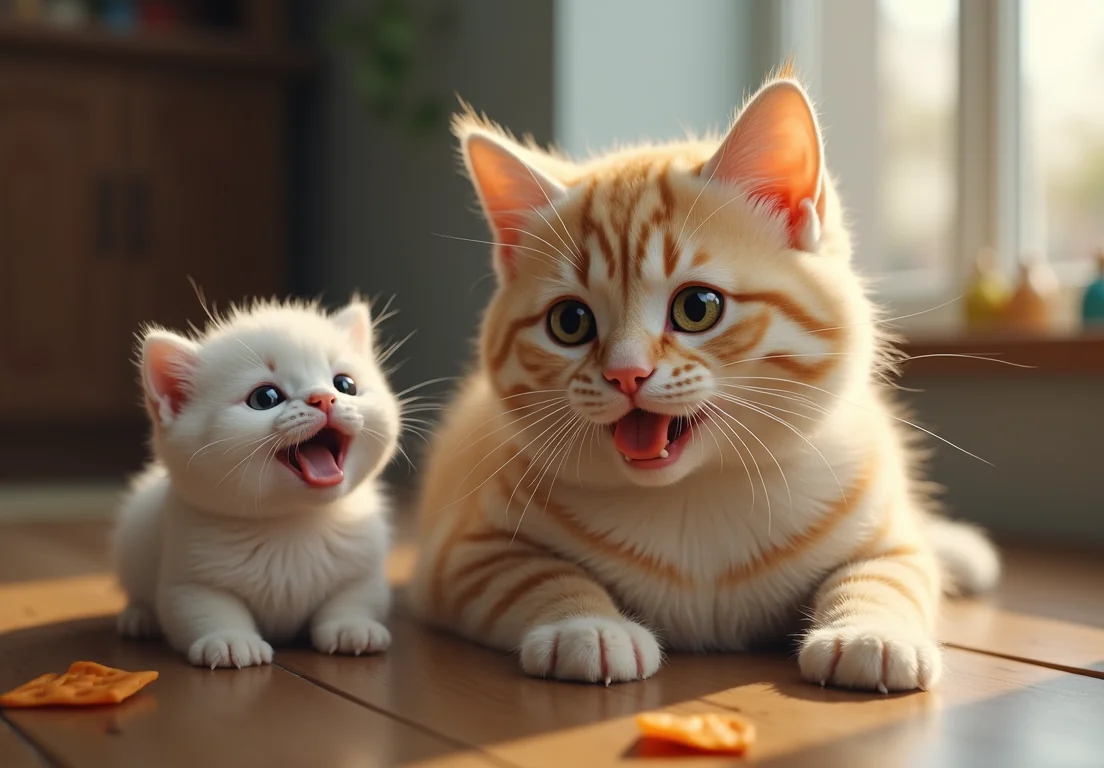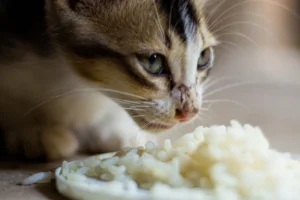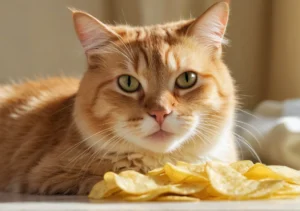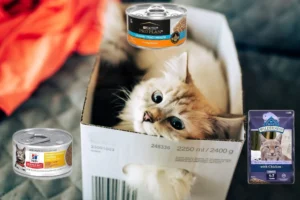Crackers may seem like a harmless snack, but when it comes to our feline friends, it’s a different story. Cats have specific dietary needs, and what works for us might not work for them.
Crackers are not inherently toxic to cats, but they do pose health risks due to their ingredients, high carb content, and lack of essential nutrients. There’s more to consider about the impact of crackers on your kitty’s health, so let’s uncover some interesting details that could surprise you.

What Ingredients Are Common in Crackers?
Crackers often come packed with ingredients that aren’t the best for your cat. Preservatives like sodium benzoate and BHT may help keep the crackers fresh, but they aren’t cat-friendly. These chemicals can cause digestive issues and even more severe health problems over time.
Many crackers contain seasonings and flavor enhancers such as garlic or onion powder. These ingredients are toxic to cats and can lead to serious conditions like hemolytic anemia. Next, there’s the flour itself. Most crackers are made with wheat flour, which is high in carbohydrates. While some cats can nibble on these occasionally, it doesn’t serve their nutritional needs and can contribute to obesity.
Here’s a quick overview of common harmful ingredients found in crackers:
- Sodium benzoate: Preservative linked to adverse reactions.
- Garlic and onion powder: Toxic to cats, even in small amounts.
- High-carb flours (like wheat): Can upset a cat’s digestive system.
Always check the label before sharing a snack with your feline friend. It’s better to play it safe with their dietary choices.
Can Cats Digest Crackers?
Cats are obligate carnivores, which means their bodies are designed primarily for a meat-based diet. Their digestive systems are quite different from those of omnivores, like humans. While cats can technically digest some carbs, they don’t have the enzymes necessary to break down complex carbohydrates efficiently.
Crackers are largely made up of carbohydrates and can be tough on your cat’s digestive system. Learning to process these carbs can lead to gas, bloating, and even more significant issues like pancreatitis. If your cat indulges in crackers frequently, you might notice a change in their appetite or digestive health.
One fascinating aspect is that cats get most of their energy from protein rather than carbohydrates. The high-carb content in crackers doesn’t provide them the necessary nutrients. Consider replacing crackers with cat-friendly treats that are high in protein and low in fillers. So, while it may be tempting to share a bite, it’s worth reconsidering for your cat’s health.
What Health Risks Are Associated with Crackers?
Crackers might seem like a harmless treat for your cat, but they can lead to several health issues. Obesity is a significant concern; these snack foods are often high in carbohydrates and low in nutritional value, which can encourage weight gain over time.
Cats are obligate carnivores, so they thrive on protein and fat, not carbs.
Another issue is digestive upset. Crackers typically contain ingredients like salt and sometimes spices, which aren’t suitable for a cat’s sensitive stomach. The high salt content can lead to dehydration, while certain preservatives and flavorings can trigger gastrointestinal disturbances, leading to vomiting or diarrhea. Even if a cat seems to enjoy a cracker as a rare snack, these potential risks make it a poor choice for regular feeding.
Are There Healthier Alternatives?
If your kitty’s got a munchies vibe, there are plenty of tasty and nutritious options that won’t jeopardize their health. Here’s a handful to consider:
- Lean meats: Think chicken or turkey breast, cooked without any seasoning. It’s protein-packed and generally safe for cats.
- Fish: Canned tuna or salmon can be treats, but limit them due to their mercury levels—about once a week is a good rule of thumb.
- Vegetables: Small bits of cooked carrots or peas can provide fiber and are low in calories.
- Commercial cat treats: Look for options that are high in protein and free from fillers.
A unique twist on snack time could be freeze-dried meat treats. These maintain nutritional quality while providing the crunchy texture that many cats enjoy.
Freeze-dried meat treats are made by removing moisture from the meat, which preserves its nutritional content, including protein and essential vitamins. For example, 3 ounces of freeze-dried chicken can contain approximately 30 grams of protein when rehydrated, making it a protein-rich snack option. This method retains the natural nutrients of the meat while offering a crunchy texture that appeals to many cats, thereby making it a better choice than carbohydrate-heavy snacks like crackers.
Not only do they satisfy that urge to snack, but they also support your cat’s dietary needs without the risks associated with crackers.
What to Do If Your Cat Eats Crackers?
If your cat snags a cracker, it’s wise to stay calm and observe their behavior. Generally, crackers aren’t toxic, but they don’t provide any nutritional benefits either.
Here’s what to do:
- Monitor Their Reaction: Keep an eye on your cat for any unusual behavior, such as vomiting, diarrhea, or lethargy. These can be signs of discomfort.
- Check Ingredients: If the cracker contains onions, garlic, or excessive salt, it’s best to take action, as these ingredients can be harmful to cats.
- Hydration is Key: Ensure your cat has access to fresh water. If they only ate a small amount, they may just need a little time to digest it.
- Avoid Panic: In most cases, they’ll be fine. Cats are pretty resilient.
- Watch for Changes: If they start showing any abnormal signs after their cracker munching, don’t hesitate to consult a vet.
When to Consult a Vet?
Understanding when to call the vet can save you a lot of worry. Here are some indicators to watch for:
- Persistent Vomiting: If your cat vomits repeatedly after eating the cracker, it could indicate they’re not tolerating it well.
- Bloody Stool: This could signal a more serious issue, so don’t ignore it.
- Severe Lethargy: If they seem unusually tired or unresponsive, check in with a vet.
- Unusual Behavior: If your cat starts acting agitated, refuses to eat, or shows signs of distress, it’s time for a professional opinion.
- Ingredient Concerns: If the crackers contained anything suspicious, like chocolate or certain spices, contact your vet immediately.
Keeping an eye on your feline friend can help you gauge whether you need that vet visit, but if you have any worries, it’s always best to err on the side of caution.
How to Create a Balanced Diet for Your Cat?
Crafting a balanced diet for your cat isn’t just about filling their bowl; it’s key to their overall health. Start with high-quality commercial cat food that lists a specific meat as the first ingredient—think chicken, turkey, or fish. It’s vital to ensure it meets AAFCO standards, which indicates it’s nutritionally complete for cats.
Mix in some wet food to keep your kitty hydrated, especially if they’re reluctant drinkers. Cats often have low thirst drive, so that added moisture through food is essential. Also, consider how often you feed them—many experts recommend two to three meals spread throughout the day instead of free feeding, as it helps maintain a healthy weight.
Be cautious with treats. Not all human foods are safe for cats, and crackers, in particular, aren’t a good choice. Most crackers are high in carbs and can upset your cat’s digestive system. Instead of offering crackers as snacks, stick to treats specifically formulated for felines.
Here’s a quick checklist for a balanced diet:
- Quality Protein: Look for a meat-first ingredient.
- Wet Food Option: Helps with hydration.
- Control Portions: Prevents obesity.
- Limit Treats: Choose cat-specific options and avoid harmful snacks.
Keeping your cat’s diet balanced is key to a happy, healthy life.
Alex, a passionate animal lover, has experience in training and understanding animal behavior. As a proud pet parent to two dogs and three cats, he founded AnimalReport.net to share insights from animal experts and expand his knowledge of the animal kingdom.




